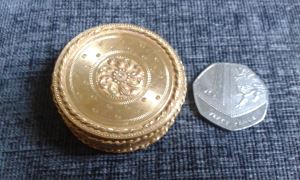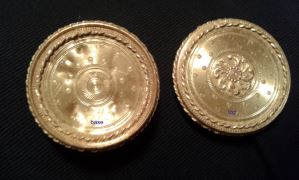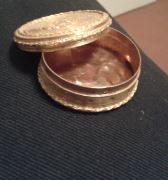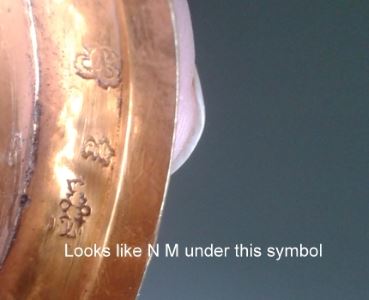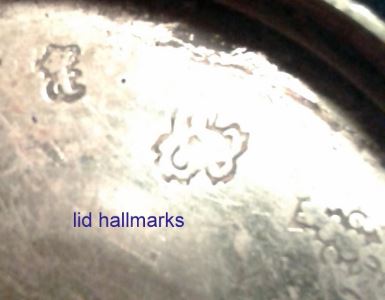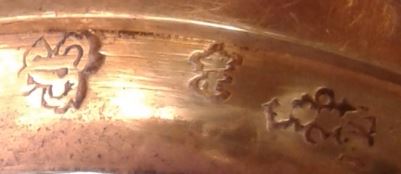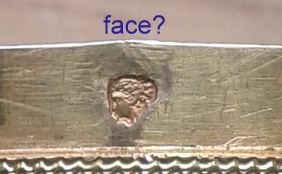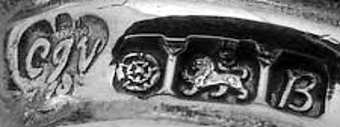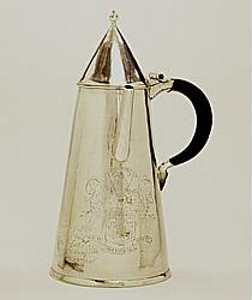
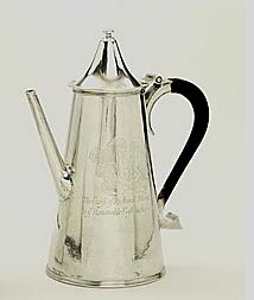
David McKinley presents:
The History of Early English Silver Tea Equipage

It has been said that there is more tea drunk in England than in
any other country in the world and tea is known as the English
national drink. It is difficult to know why this is but it may
be that tea was looked on in its early days as a status symbol.
When tea first came to England it was believed to have medicinal
properties and was very expensive so that it was only drunk by
the wealthy.
Another mystery surrounding the consumption of tea in England is
the way in which it is taken. Originally it was imported from
China and the Chinese did not, at the time, use dairy products
at all yet the English habitually put milk in their tea. It
cannot be established when exactly this practice started but it
was certainly well established by the 18th century. The
international traveller Per Kalm on a visit to England in 1748
wrote "most people pour a little cream or sweet milk into the
tea cup when they are about to drink the tea..."....
click
here

Welcome to new ASCAS members:
Suzanne Bauer - USA
John Bruce - England UK
Joann Cameron - USA
Hans Demel - Austria
Ann Heneghan - Ireland
Ted MacRae-Duchene - Canada
Barrie Wallis - England UK
Cynthia Welch - USA
Iain F. writes:
...I have a gold bonbonniere which looks to have French
hallmarks (set of 3), possibly late 1700's.
The item is about 44mm across. Three sets of hallmarks, lid,
base & base rim. Possibly one single hallmark on side of base -
looks like a head/side face.
I need your help to identify the marks.
Kind regards
Iain
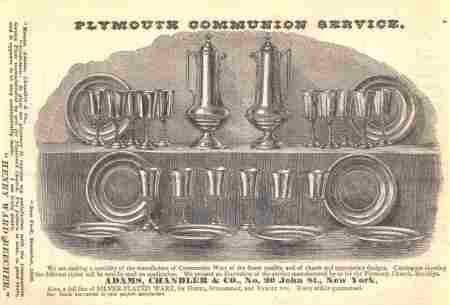 |
This month ASCAS presents an ancient advertisement
of:
ADAMS, CHANDLER & CO
No 20 John St. New York
Active in the salesroom at 20 John Street, New York (the
factory was in Brooklyn).
John P. Adams was active from c. 1868 as Adams & Price.
Acquiring in 1869 a new partner (Henry S. Chandler) the
firm changed its name to Adams, Chandler & Co.
This image is part of the
ADVERTISEMENTS IN SILVER - SILVER ADVERTISING
section of www.silvercollection.it website
|
"A WORD per MONTH"
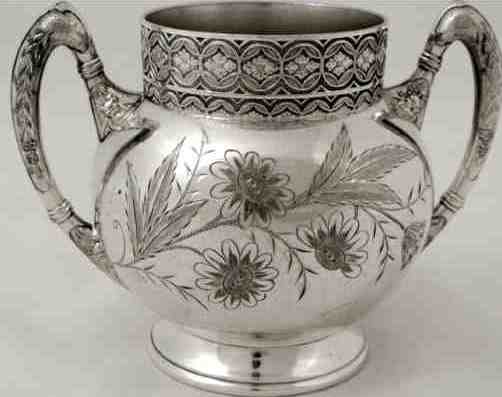
|
SPOON HOLDER
SPOON GOBLET
(VASE SHAPE)
Spoon holders of the "two handled vase" shape may be
considered an exclusively American form.
While spoon trays, spoon racks and various combinations
of sugar bowls and spoon racks can be found elsewhere,
the "vase-shaped" spoon holder is an American invention.
Their production began in the 1850s, being also called "spoon
goblets" in early Rogers Bros Mfg. Co catalogs.
The success of this new type of tea/coffee set implement
is demonstrated by the presence of 15 spoon holders of
different style in 1867 Meriden Britannia Co, 45 in 1885
Reed & Barton and 42 in 1886 Meriden Britannia Co
catalogs.....
more
|
"A SILVERSMITH per MONTH"
|
|
C.J. VANDER - C.J. VANDER LTD
successors to ALEXANDER MACRAE - MACRAE &
GOLDSTEIN - MARTIN GOLDSTEIN
The origins of the company
date back to Alexander Macrae who established his
business in 1856 (32 Bow Street, Covent Garden, London).
In 1870 he entered in partnership with Martin Goldstein
changing the firm's name to Macrae & Goldstein. The
partnership was dissolved in 1878 and Martin Goldstein
continued to trade under his own name until 1886, when
he sold the firm to Cornelius Joshua Vander (1837-1904).
Cornelius Joshua Vanderpump (this was the name before
Anglicisation) was apprenticed to Macrae & Goldstein and
entered his first mark on 18 October 1886 (the firm's
address was now 17 lisle Street, Soho).
C.J. Vander continued the activity until his death
(1904), when the business was continued by his sons
Henry and Alfred Vander. In the 1920's Henry's sons
(Henry and Arthur) and Alfred's son (Norman) entered in
the business.....
more
|
"A CREST per MONTH"
CATHCART - CLATER - ELLIOT - ELLIOTT - KERNABY -
KNOWS - LEES - LOSH - NAPIER - ROBERTSON - SMELLIE -
SOMMERVILLE - SOMERVIL
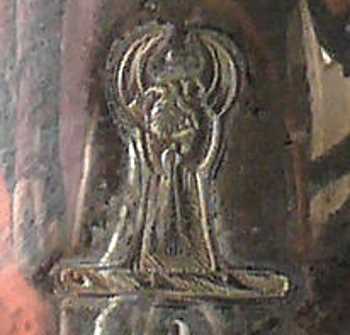
|
The crest of various English,
Irish and Scottish families: CATHCART (Ayrs.) - CLATER (Eng.)
- ELLIOT - ELLIOTT - KERNABY (Eng.) - KNOWS (Sco.) -
LEES (Iri.) - LOSH (Eng.) - NAPIER (Sco.) -ROBERTSON (Sco.)
- SOMMERVILLE (Sco.) - SOMERVIL (Sco.) - SMELLIE (Lon.
and Sco.)
A dexter cubit arm, erect, in hand a crescent.
The crest was found on a silverplate milk jug made by
Elkington & Co, dated 1903
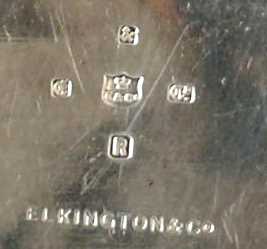
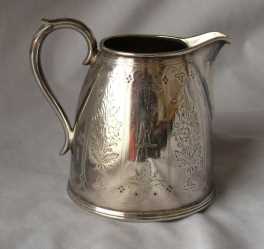 |
Closing our OCTOBER 2014 edition of ASCAS Newsletter I hope
you have appreciated its content.
Your comments, suggestions and advice will be of great help.
My thanks to Iain Fraser and David McKinley for their precious
contributions.
Giorgio Busetto
Secretary
DISCLAIMER AND PRIVACY POLICY
ASCAS is a community of people having a common
interest in antique silver.
It is a non-profit association without commercial links.
Membership is open to whomever has a true interest in
this subject matter.
ASCAS has no real property and no fees are requested nor
accepted from members.
ASCAS keeps in touch with its members only through
periodical newsletters, e-mails and web-site updating
and ignores and is not responsible for any other
activity pursued by its members.
Likewise, ASCAS is not responsible for opinions,
evaluation and images displayed, and in any form
published or supplied for publication, by its members
who, in any case, maintain the property of their works
and assure the respect of national and international
legislation about Intellectual Property.
ASCAS does not have the full addresses of its members (only
town, country and e-mail address are requested for
membership).
ASCAS handles and protects with care its members' e-mail
addresses, will not disclose the addresses to third
parties, will use this information only to reply to
requests received from members and for communications
strictly related to its activity.
These rules are expressly accepted by submitting the
membership request.
|
|
 newsletter
# 125 October 2014
newsletter
# 125 October 2014










